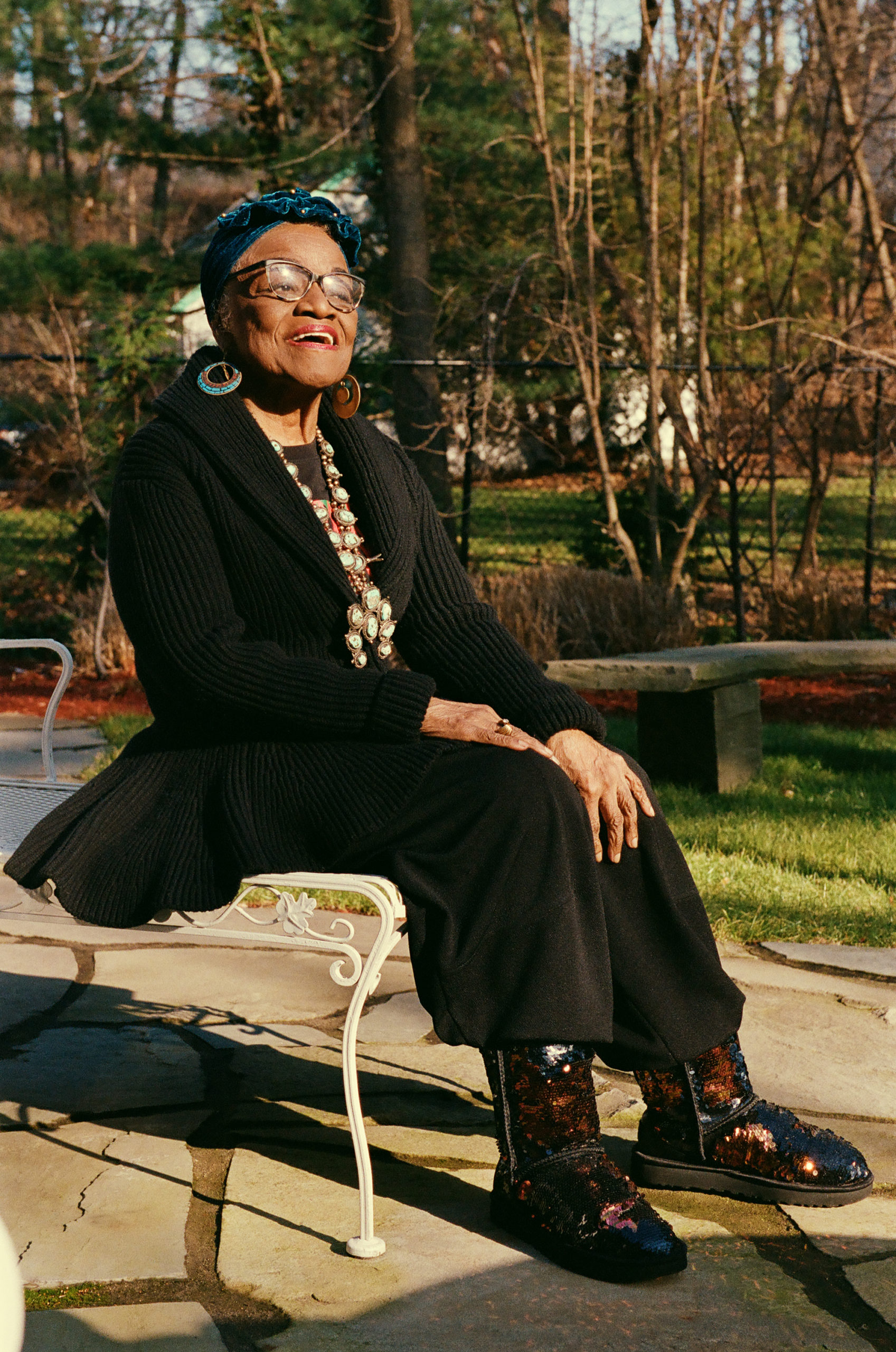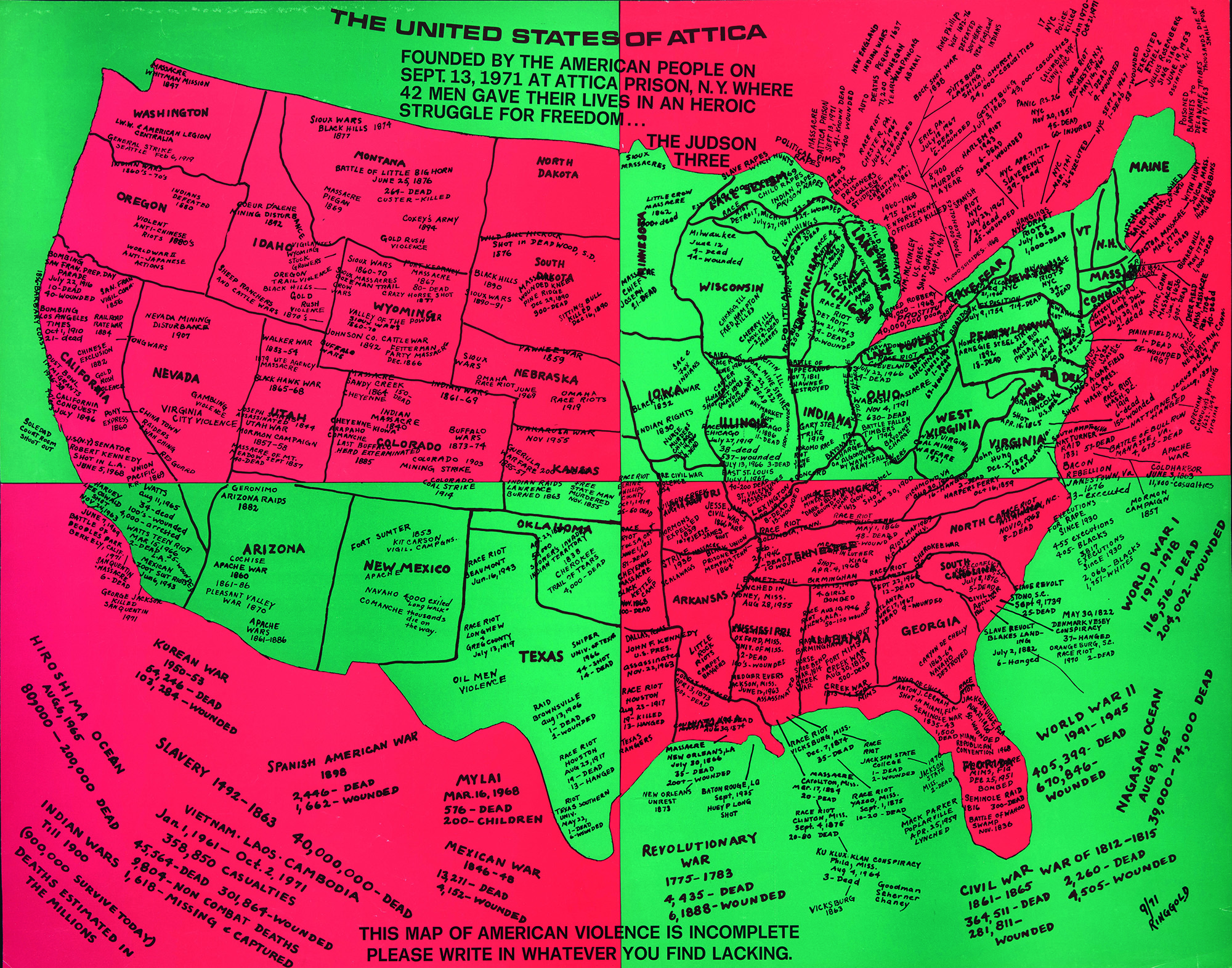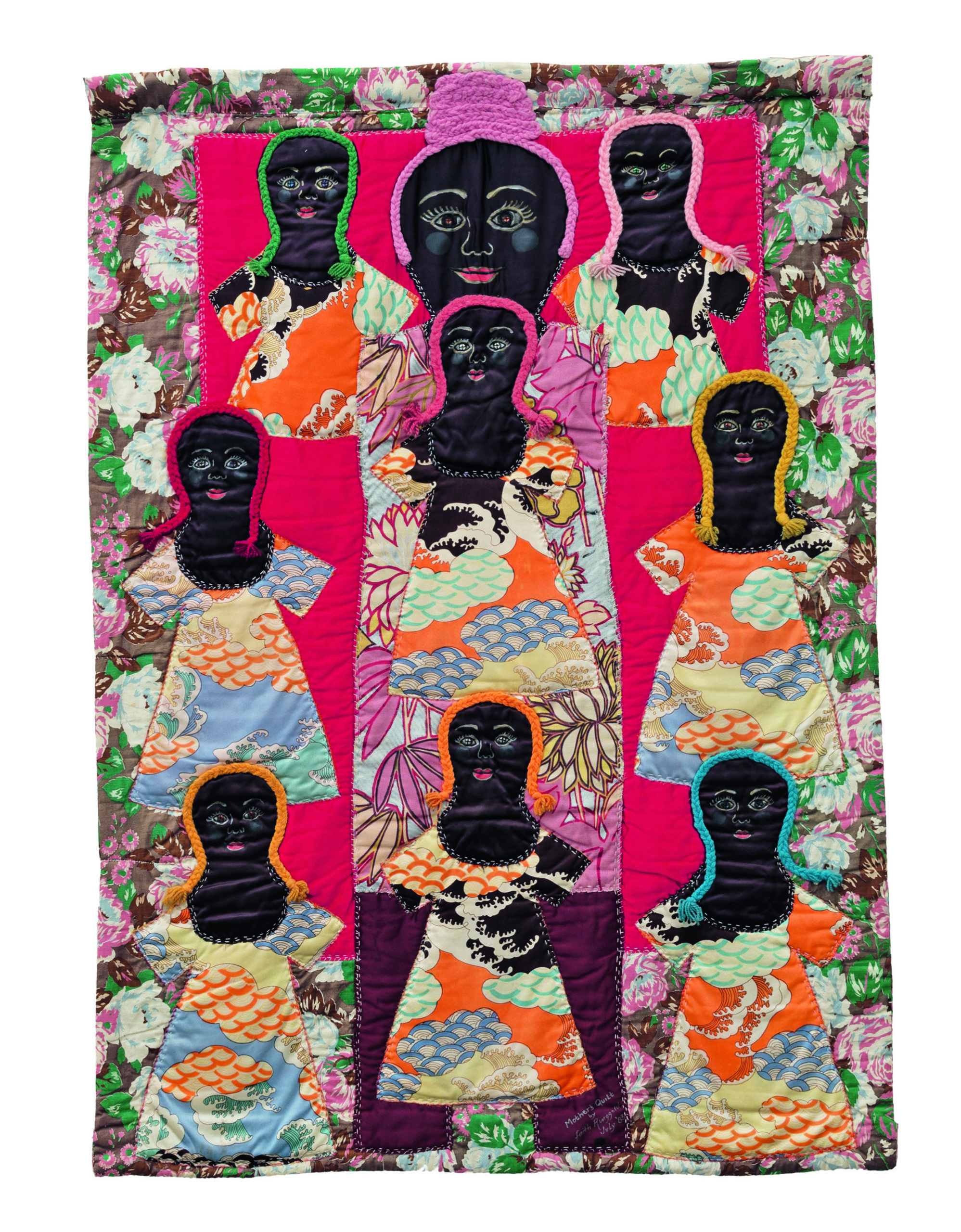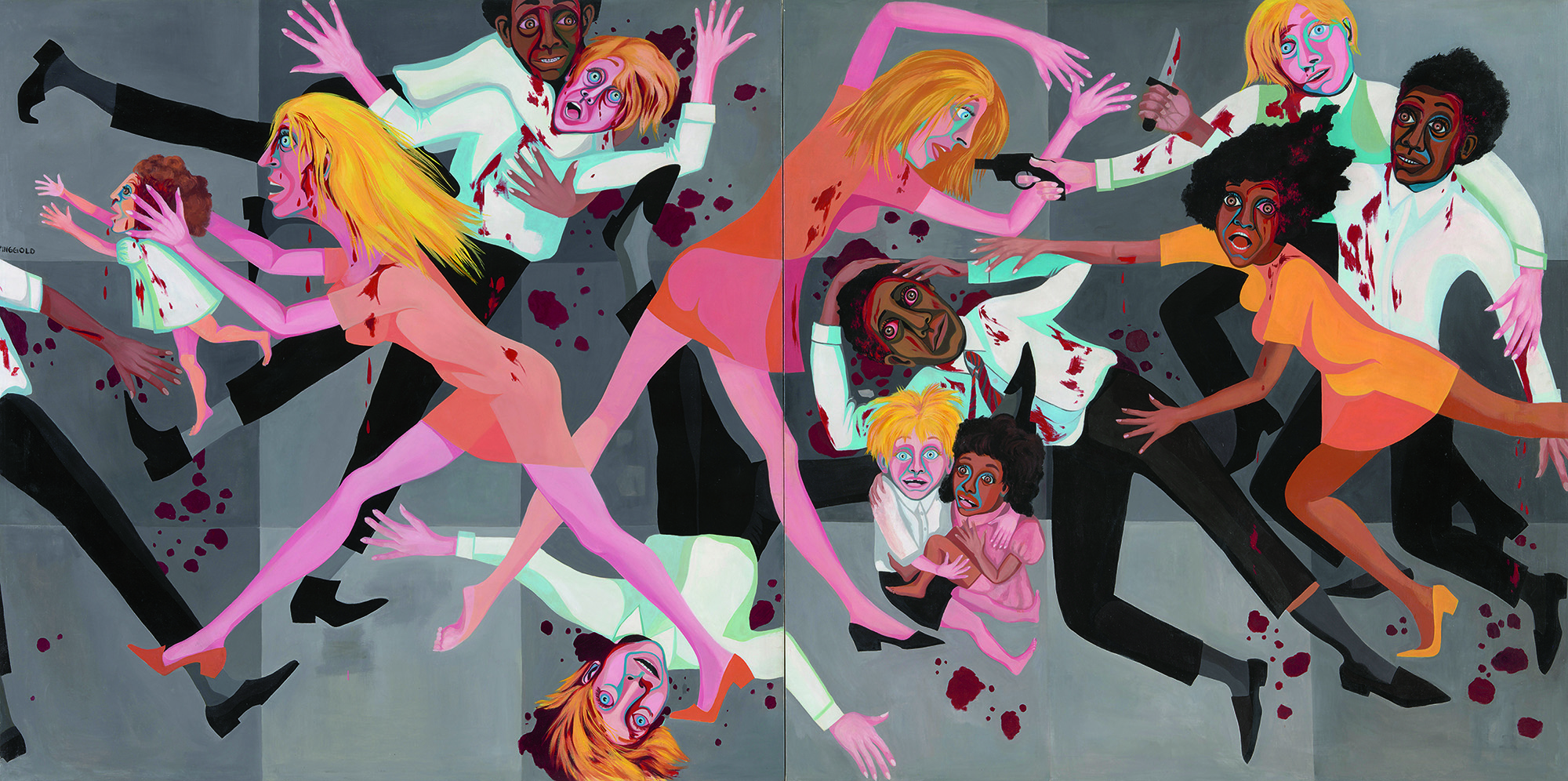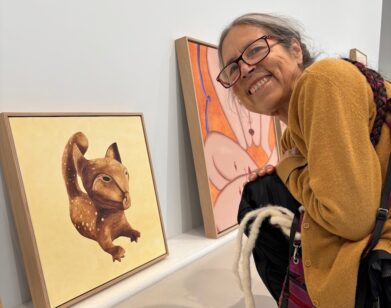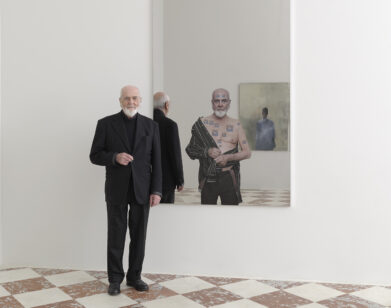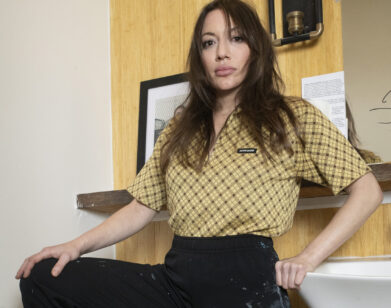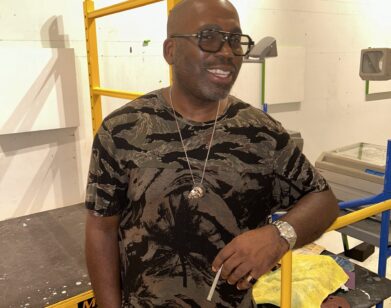Art
Faith Ringgold Has All the Answers
For those who believe that artists can be activists, that their work can truly reach beyond small complacent audiences and instigate real social change, there is one patron saint: Faith Ringgold. Arguably no other artist in the past century has been able to combine aesthetics with political impact like the radical, visually resourceful Harlem native whose work, too long overlooked by the white establishment, runs from moody portraits and dynamic, often violent figurative paintings in the 1960s, to her iconic narrative quilt paintings of “tar beach” roofs and family gatherings in the 1980s.
Along the way, Ringgold, still at work today at age 91, became an outspoken figure for Civil Rights, antiracism, the antiwar movement, women’s rights, and the representation of Black women in and outside the art world. Her legacy includes being arrested for desecration of the American flag while participating in a group show in 1970, creating a mural for the Correctional Institution for Women on Rikers Island, protesting the exclusion of Black and female artists at the Whitney Museum of American Art and the Museum of Modern Art, forming a number of key groups to foster the wider recognition of Black artists, and—a crucial subject in her work being family—becoming a mother to two accomplished daughters.
This spring, the New Museum is presenting the first New York retrospective of Ringgold’s 60 years of art-making, a treasure trove of painting, sculpture, and fabric works that reveals just how far ahead of her time she was—and, yet, also critically necessary to her time. (A corresponding monograph by Phaidon serves as an excellent historical refresher on her influence.) We invited 18 artists, writers, musicians, actors, and filmmakers to ask this American legend a range of questions, which she answered at her home in New Jersey, with the help of her older daughter, the writer and activist Michele Wallace. —CHRISTOPHER BOLLEN
———
SONNY ROLLINS: Do you believe in life after death?
FAITH RINGGOLD: No. Not life as we know it. Is there any more to say after that?
MICHELE WALLACE: What about reincarnation?
RINGGOLD: I don’t mind not coming back if I’m going to be a dog or a cat.
———
RASHID JOHNSON: Did you make art in quarantine?
RINGGOLD: No, not too much. And that felt awful. There were too many things happening. And the worst part was that I was cut off from the world in a way that my art depends upon. So there was just very little inspiration.
WALLACE: But you did manage to do some caricatures of Donald Trump, which you haven’t shown to anyone yet.
RINGGOLD: I’m going to wait to show those after this period in life goes away, so I can see if I feel the same or not. I can hardly believe that time was as bad as it was. But I don’t like doing negative art, unless there’s something good to transmit in it. I’m looking for the good part.
———
WHOOPI GOLDBERG: How do we engage kids in reading?
RINGGOLD: We give them books. And we make sure that there are a lot of books around before they can even read. Then you give them the time and space so they can really engage.
———
HILTON ALS: Are you, the artist Faith, different from the other Faith—woman, mother, friend?
RINGGOLD: I think I’m the same, because I only do art about things that I know and feel and am concerned with. I don’t divorce my art from myself.
WALLACE: So your existence as a woman, mother, and friend is all included in your work as an artist?
RINGGOLD: They are expressions of me as an artist. And I like who I am. I have no reason to change that.
———
HANK WILLIS THOMAS: How far have we come?
RINGGOLD: As artists, we have a long way to go, but you never know whether art is going through a time of recession or not. And I mean a creative recession, not an economic one. The creativity and content of a work is not fascinating enough, and therefore the art world is not as central to our lives as it has sometimes been in the past. I think this is a quiet time in art. But who knows? Maybe we’ll get to better times and look back and realize we’ve come farther than is noticeable now. But I think we are so preoccupied with the news of the world we block everything else out.
———
KARA WALKER: What activity or entity keeps you feeling optimistic, lively, and purposeful?
RINGGOLD: Painting. I usually like to do a series because it’s telling some kind of story. And if it hits me good, it might take a long time to tell it, and I might produce a lot out of that one idea. But I don’t do anything that doesn’t inspire me. I have a lot of different series that I’ve begun and I have to watch and see where they go. One of them is about aging, which is not what it used to be. Another is about Trump, who won’t go away. But it’s a hard question to answer. Since my husband died [Burdette Ringgold, who died in February 2020], it’s been problematic.
WALLACE: You didn’t expect his death, did you?
RINGGOLD: No, I didn’t. You can’t expect a loved one to leave you.
———
JORDAN CASTEEL: Who is your audience?
RINGGOLD: I don’t really know who my audience is now. I would like the whole world to be. I create work that pleases me, that thrills me, that speaks to me. But it has to tell a story that is profound. It’s got to speak to a wide audience of people.
———
JA’TOVIA GARY: How does spirituality influence or impact your work? Can you speak about the role the ancestors might play in your creative process and works?
RINGGOLD: My ancestry is the history of me, and I’m very interested in that. I always come from the perspective of being a Black woman in America— that’s my story, at all times of my life.
———
TSCHABALALA SELF: How do you feel growing up in New York City, specifically Harlem, affected your artistic practice?
RINGGOLD: Harlem has given me a strong image of Black American culture—the music, the dance, the people, everything. I got to know a lot of artists who lived in Harlem or came up there to visit. My mother and father both grew up in Harlem, and so did my brother and sister.
———
———
CARRIE MAE WEEMS: How has music impacted your work? To whom do you look for inspiration?
RINGGOLD: I love music. It totally and completely inspires me. My first husband was a musician. I had music and musicians all around me from the time I was very young. Music is just implanted in my life, primarily jazz. But also the blues, and to some extent, gospel.
WEEMS: What do you consider to be your most important work? Why and when was it made?
RINGGOLD: My most important work is what I am doing currently. But honestly I love everything I’ve done, because if I don’t love it, nobody’s going to see it but me.
———
WANGECHI MUTU: I was curious who you were named after or if there’s a reason you were named Faith? In Gikuyu culture, as a second daughter, I’m named after my mum’s mother. Children are named after their grandparents, and older relatives, so that they are a continuation of the spirit of the elders who pass.
RINGGOLD: As it turned out, my mother thought I was going to be a boy because she had a son who died of pneumonia not too long before I was conceived. She and my father were hoping that they would have a boy to replace him. His name had been Ralph. And, when I was born, I was not a boy. My mother was defeated. The nurses in the hospital had to console her because she was looking for this boy to replace her little son. When they asked her for a name, she didn’t have one in mind because she just knew it was going to be a boy. However, one of the doctors came by and decided that he would like to name this baby, and he did. Faith.
MUTU: Do you go into the studio daily and consistently or is your work pattern sporadic and dependent on other rhythms?
RINGGOLD: Normally I did go to my studio every day, before this combination of problems—the world falling into a hole, and mourning my husband. Before all this I used to get up every morning at six o’clock and go upstairs. It will come back again, but I can’t paint if I’m not inspired. But I sometimes think I’ve already done so much work that it doesn’t matter.
———
ZZ PACKER: How has being a public-school teacher shaped your practice as an artist?
RINGGOLD: Children are so creative, imaginative, and they’re such wonderful artists. I was an art teacher. I found the kids so inspiring, and that’s one thing I miss about teaching.
WALLACE: You taught college too.
RINGGOLD: Yes, teaching college was good. But the children were better.
———
NATALIE BALL: Have you ever used your family’s or ancestors’ clothing as material to compose your quilt pieces?
RINGGOLD: No. I have a lot of their clothes, but I didn’t use it for the quilts. A lot of the clothing I have was designed and made by my mother. So for me, those pieces are already art. To make art with it would destroy it.
BALL: What’s your favorite meal?
RINGGOLD: You know something? I’m not into food that much anymore. But a pork chop sandwich used to sound so good!
———
DARRYL PINCKNEY: Did your activism help shape your daughter Michele Wallace’s challenging questions inBlack Macho and the Myth of the Superwoman [1978]?
RINGGOLD: Yes, I think so. I was amazed about Michele’s perception of her life, and my life as her mother. I’m so happy she wrote it. It’s a part of every child’s life to look back on the family and think about how they have influenced your life. Michele did that. I don’t agree with some of it, but she’s a brilliant writer and I’m glad she wrote it. It also inspired a book I wrote in response to it, A Letter to My Daughter, Michele [2015].
———
ADAM PENDLETON: What does your studio mean to you today?
WALLACE: I just want to add, you started out with a studio that was in a closet. I remember when I was a girl, you used to paint in that little closet right by the front door, back when we were living with Mama Jones [Willi Posey Jones, Ringgold’s mother].
RINGGOLD: Yes, but that was a studio, too. You make a studio wherever you can. I remember that closet. You kids used to go in there and mess with my art.
———
SUZANNE JACKSON: Considering its powerful composition and vision of gender and racial equality, could you describe your experience of having your mural For the Women’s House (1971) “institutionally” whitewashed in subsequent years, and then afterwards, restored?
RINGGOLD: It was horrible to learn that the inmates had whitewashed my painting, but then I realized that the reason that happened was because my painting was for the women’s house, and men had moved into that prison. They expelled that painting. It should have been moved when the women moved out, but I remember that when they installed it, they said there’s no way anyone would be able to remove it. I remember the installer telling me at the time, “Don’t worry about it. They’re never going to take this down.” And they didn’t. They just whitewashed it. But thank god they did use whitewash because it didn’t penetrate the oil. So they couldn’t destroy it.
WALLACE: But finally they did get it off the wall, and one of the guards contacted us saying that it was in the basement and they were getting ready to dispose of it. So it was time for you to make a move. You went to the warden and then the commissioner, and he got interested and reclaimed the work and restored it.
RINGGOLD: The restoration that the commissioner of prisons did was fabulous. It was one of my last oil paintings, and if I hadn’t done it in oil, it would have been destroyed forever.
———
RALPH LEMON: Do you still have a tar beach in your life? How and from where do you look at the stars?
RINGGOLD: Tar beaches no longer exist. We are living in a time in which people cannot go up on the roof and feel the beauty of the world, the stars and all else. The doors to the roofs are locked for one reason or another. When we were kids, families would go up to the roofs in Harlem to have picnics. It was another world up there, and another time.
———
LEE DANIELS: What is your secret to staying and looking so young?
RINGGOLD: Now we’re getting personal. [Laughs] I feel like my life is still ahead of me, and that I have a lot more to live.
———
Artwork Images: © Faith Ringgold / ARS, NY and DACS, London, courtesy ACA Galleries, New York, 2021, as printed in Phaidon’s Faith Ringgold: American People.

